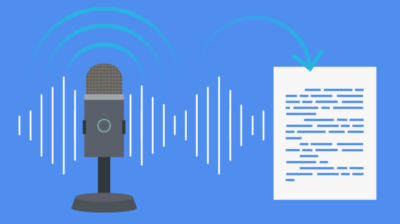IoT Software Development Demystified

The Internet of Things (IoT) is no longer a futuristic concept; it’s a reality that’s shaping the way we live and work. At the heart of this transformation is IoT software development, a field that can seem complex and daunting to the uninitiated. In this article, we will demystify IoT software development, explaining what it entails and how it’s changing the world around us.
Understanding IoT Software Development
To grasp the essence of IoT software development, it’s essential to break it down into its core components:
- IoT Devices: These are physical objects embedded with sensors, actuators, and communication hardware. They collect data and interact with the physical world. Examples include smart thermostats, wearable fitness trackers, and industrial sensors.
- Connectivity: IoT devices communicate with each other or with central systems through the internet or other communication protocols. This connectivity enables data transfer and remote control of devices.
- Data Processing: The data collected by IoT devices must be processed and analyzed to extract meaningful insights. This step involves data storage, real-time analytics, and machine learning algorithms to make sense of the data.
- User Interfaces: Users interact with IoT systems through web or mobile applications. These interfaces allow users to monitor, control, and receive notifications from their IoT devices.
- Security: IoT systems deal with sensitive data and can have significant real-world impacts. Security measures are crucial to protect data integrity and user privacy.
The Role of Web Application Development for IoT
Resource 1: For more in-depth information on web application development for IoT, follow this link.
Web application development for IoT plays a central role in bringing the entire ecosystem together. These web applications serve as the user interface through which individuals or organizations interact with their IoT devices and systems. They provide real-time data visualization, control options, and a seamless user experience.
Web application development for IoT is a multidisciplinary field that combines web development, data analytics, and user experience design. It involves creating responsive, scalable, and secure web interfaces that can handle the influx of data generated by IoT devices and deliver actionable insights to users.
Key Components of IoT Software Development
Let’s delve into the key components of IoT software development to get a better understanding of how it all comes together:
Device Management and Connectivity
IoT software development begins with device management and connectivity. Developers configure and manage the IoT devices, ensuring they are connected to the network and capable of transmitting data. This step includes provisioning, authentication, and secure communication protocols.
Data Ingestion and Processing
Once data starts flowing from IoT devices, it needs to be ingested, processed, and stored. This involves setting up data pipelines, databases, and real-time processing systems. Advanced data processing techniques, including stream processing and batch analytics, are applied to derive insights from the data.
User Interface Development
Creating user-friendly interfaces is a critical aspect of IoT software development. Developers design and build web applications that enable users to monitor device status, view historical data, and take control actions. These interfaces must be intuitive and responsive to cater to a diverse user base.
Analytics and Machine Learning
Resource 2: To explore the role of machine learning in IoT, follow this link.
IoT software development often includes analytics and machine learning components. Machine learning models can analyze large volumes of data to detect patterns, anomalies, and trends. For example, in industrial IoT, predictive maintenance models can forecast equipment failures, minimizing downtime.
Security and Privacy
Security is a paramount concern in IoT software development. Developers implement robust security measures to protect data in transit and at rest. This includes encryption, authentication, and access control mechanisms. Privacy considerations are also essential, especially when dealing with personal or sensitive data.
Scalability and Reliability
IoT systems can scale rapidly as more devices are added to the network. Therefore, scalability and reliability are crucial aspects of IoT software development. Developers design systems that can handle increased data loads without performance degradation and implement redundancy for fault tolerance.
Real-World Applications of IoT Software Development
IoT software development has far-reaching applications across various industries:
- Healthcare: IoT devices and applications are used for remote patient monitoring, medication adherence tracking, and wearable health tech.
- Smart Cities: IoT solutions are deployed for traffic management, waste management, and environmental monitoring to create more efficient and sustainable urban environments.
- Agriculture: IoT-enabled sensors and analytics improve crop management, irrigation, and livestock monitoring.
- Manufacturing: IoT enhances production processes with predictive maintenance, quality control, and inventory management.
- Energy: Smart grids and IoT solutions optimize energy consumption and distribution.
- Transportation: IoT systems improve logistics, vehicle tracking, and public transportation efficiency.
Conclusion
IoT software development is the driving force behind the connected world we live in today. It encompasses a wide range of technologies and disciplines, from device management and data processing to user interface design and security.
Web application development for IoT is a pivotal part of this landscape, providing the interfaces through which users interact with their IoT ecosystems. As technology continues to advance, IoT software development will play an increasingly significant role in shaping our future, making our lives more connected, efficient, and informed.
Alexia is the author at Research Snipers covering all technology news including Google, Apple, Android, Xiaomi, Huawei, Samsung News, and More.











